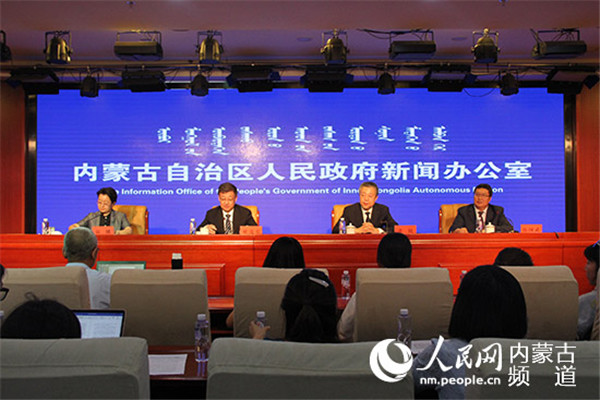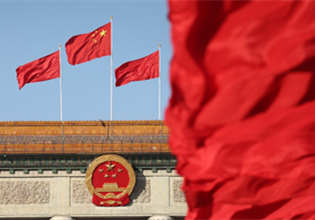Tongliao charts great advances over seven decades

Local officials from Tongliao in Inner Mongolia highlight the great achievements made by the city at a press conference in Hohhot, capital of the autonomous region, on Sept 3. [Photo/nm.people.cn]
Tongliao -- located in the eastern part of North China's Inner Mongolia autonomous region and in the hinterland of the Horqin Prairie -- has made extraordinary advances in the seven decades since the founding of the People's Republic of China in 1949.
That's according to city officials, who were giving a briefing at a news conference held in Hohhot, the capital of North China's Inner Mongolia autonomous regionon Sept 3.
The news conference was part of a series of events being held in Inner Mongolia to report on the autonomous region's achievements over the past 70 years and to celebrate the 70th anniversary of the founding of the People's Republic of China.
In 1949, Tongliao's permanent residents were about 1.75 million. By 2018, that had grown to 3.133 million, of whom Mongolian ethnic group locals numbered 1.559 million, making it the city with the biggest population from that ethnic group in China.
The overall GDP of Tongliao reached 130.16 billion yuan ($18.21 billion) in 2018, 52.2 times greater than its GDP in 1952, calculated at constant prices, with an average growth of 10.4 percent.
The per capita disposable income of urban and rural residents increased from 423 yuan and 151 yuan in 1978 to 31,936 yuan and 13,797 yuan in 2018, respectively, increasing by 75 times and 90 times. In addition, annual average per capita spending by residents increased from 10.3 yuan in 1949 to 17,992 yuan in 2018.
Since 2013, Tongliao has invested over 20 billion yuan in poverty alleviation, officials said.
As a result, the number of people living in poverty had dropped from 227,000 to 27,800 by the end of 2018, they added.
In six years, the numbers of impoverished residents has been reduced by 199,000, some 503 poverty-stricken villages have been lifted out of poverty and last year alone three poverty-stricken banners and counties extricated from poverty.
Officials said the poverty rate has dropped from 11.2 percent to 1.4 percent during the period and the remaining three poverty-stricken banners moved out of poverty this year.
At the same time, Tongliao's registered permanent urban residents reached 30.18 percent of the total population.
The urban registered population increased from 96,000 in 1953 to 955,000, the urban per capita housing area reached 31 square meters and the per capita green area reached 20 square meters. The per capita housing area of farmers and herdsmen is 30 square meters and 95 percent of the villages have access to broadband internet.
Officials said Tongliao is located in the world's best corn-planting area and is an important grain production center for China.
The area under cultivation and its grain output ranks it first in the region. Last year Tongliao's grain harvest came in at 8.17 billion kilograms, which is 22 times more than the yield in 1949. Moreover, the total numbers of livestock at the end of 2018 exceeded nine million head, an increase of 9.5 times over 1949.
Tongliao produces about 10 million kilowatts annually of wind power. It is a 1 million kW solar power producer annually and is also an important energy base in eastern Inner Mongolia.
Some 52 kinds of mineral resources are sourced there – including coal, oil and oil shale and the city's coal reserves total about 11.3 billion tons. The Huolinhe coalfield is one of 13 large-scale coal bases planned and constructed by the state.
In terms of wind power, the facilities there have an installed capacity of 30 million kilowatts, and the annual sunshine hours exceed 3,000 hours. Officials said it is a veritable El Dorado of energy resources.
They told the news conference that in recent years Tongliao has been continuously optimizing its energy supply structure, extending the chain of resource transformation, upgrading the levels of clean energy use and deepening reforms of its energy system.
Currently it has an annual output of 50 million tons of coal and installed capacity of 12 million kilowatts of electricity. Of the latter, installed renewable energy comprises about 43 percent of capacity.
Its volumes of power generation, social electricity consumption and industrial electricity consumption combined account for more than half the total in eastern Inner Mongolia.



 Print
Print Mail
Mail





